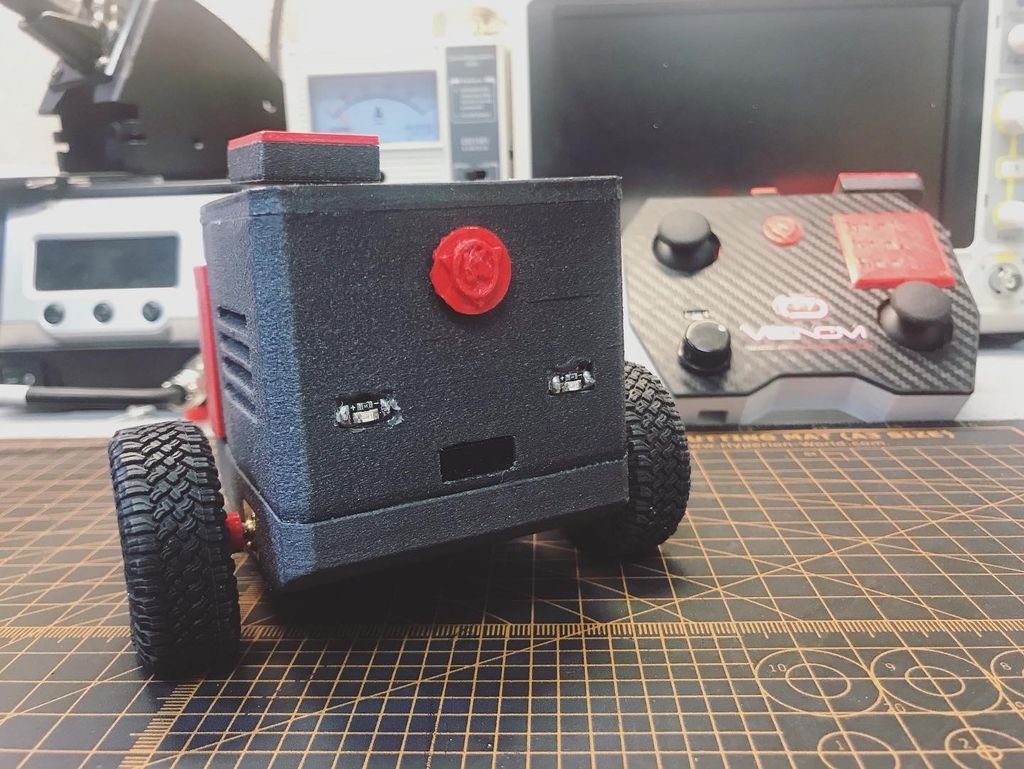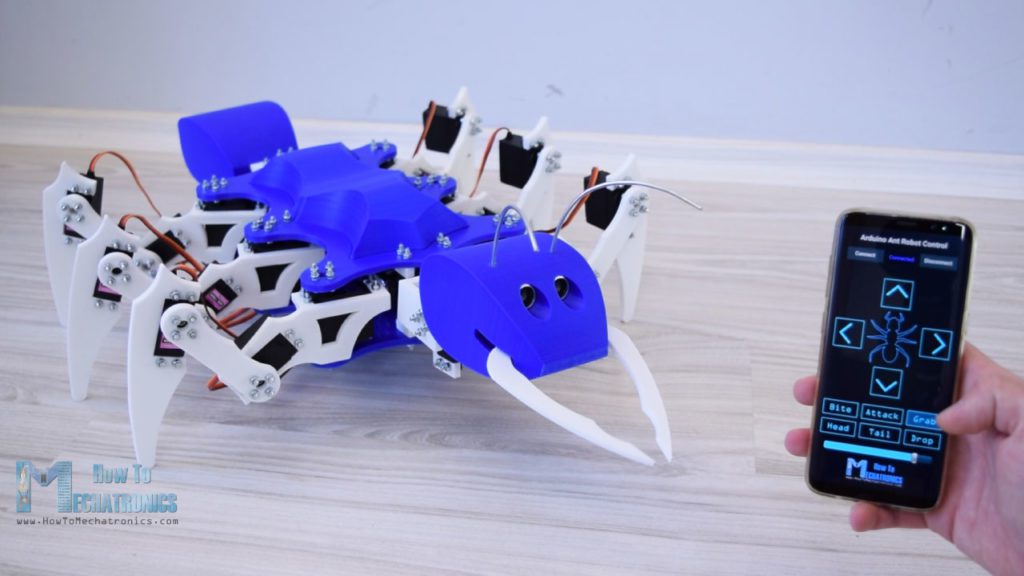Schlagwort: 3D-Printed Robot
-

Meet MrK_Blockvader, a little mobile robot that’s lots of fun
Reading Time: < 1 minuteOne of the simplest ways to make a mobile robot involves differential steering, where two wheels move at different speeds as needed to turn and a ball caster keeps it from tipping over. The MrK_Blockvader is an excellent take on this type of bot — demonstrated in the first clip below — featuring…
-

Arduino Mega is the brains of this ant-like hexapod
Reading Time: 2 minutesArduino Mega is the brains of this ant-like hexapod Arduino Team — December 13th, 2018 Six-legged robots are nothing new, but if you’d like inspiration for your own, it would be hard to beat this 22 servo-driven, 3D-printed hexapod from Dejan at How To Mechatronics. The ant-inspired device features three metal geared…

